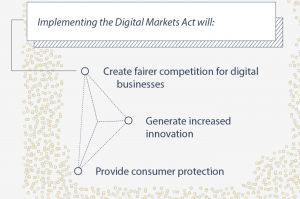Automation with Artificial Intelligence
Automation with Artificial Intelligence (AI) is transforming the way businesses operate by streamlining processes and reducing costs. It’s is increasingly being used by businesses to improve productivity in a variety of ways. AI can automate repetitive and time-consuming tasks, such as data collection and analysis, pattern recognition, predictive maintenance, fraud detection & customer service which frees up employees to focus on more complex tasks that require human decision-making and creativity such as strategic planning and decision-making. AI’s ability to learn and adapt makes it an indispensable tool in streamlining work processes, increase productivity and accuracy while reducing overhead costs. For example, a chatbot powered by AI can provide 24/7 customer support at a fraction of the cost of human customer service representatives.
When used together, automation and AI can supercharge your business. Below are some ways in which AI can be a game-changer for your business operations and increase productivity:
Natural Language Processing (NLP): NLP is a branch of AI that enables machines to understand and interpret human language. NLP can be used to automate customer service inquiries, such as chatbots, which can quickly and efficiently respond to common questions and issues.
Robotic Process Automation (RPA): RPA is a type of software that can be used to automate repetitive tasks. For example, an RPA bot can be programmed to extract data from invoices, input it into a database, and create reports.
Predictive Analytics: Predictive analytics is a branch of AI that uses algorithms to analyze historical data and make predictions about future trends. This can be used to automate tasks such as forecasting demand, scheduling maintenance, and predicting equipment failures.
Image Recognition: Image recognition is a type of AI that enables machines to recognize and interpret visual data. This can be used to automate tasks such as quality control, where machines can detect defects in products and reject them automatically.
Autonomous Vehicles: Autonomous vehicles are a type of AI-powered automation that can be used to transport goods and people without human intervention. This can be used to increase efficiency and reduce costs in industries such as logistics and transportation.
Overall, AI-powered automation can help businesses save time and money, improve efficiency and accuracy, and reduce the risk of errors and mistakes.
How to Implement Automation with Artificial Intelligence
Implementing automation with artificial intelligence (AI) requires a systematic approach that involves several steps. Here is a general outline of the process:
Define the tasks you want to automate. Automation with AI can be used for a variety of tasks, so it’s important to identify the specific tasks you want to automate. This will help you determine which AI technologies to use and how to best configure them. Consider the potential benefits of automation, such as increased efficiency, accuracy, and cost savings.
Gather data: AI algorithms need data to learn and make decisions. Collect and organize the relevant data for the tasks you want to automate.
Choose the right AI technology: There are a variety of AI technologies available, such as machine learning, natural language processing, and computer vision, each with its own strengths and weaknesses. Be sure to choose the right technology for the task at hand.
Configure the AI technology properly: Once you’ve chosen the right AI technology, it’s important to configure it properly. This includes setting up the training data and parameters needed for the AI technology to function properly.
Integrate with existing systems: To make the most of automation, you need to integrate the AI algorithms with your existing systems. This may involve working with APIs or other integration tools.
Test and evaluate the results: After you’ve implemented automation with artificial intelligence, be sure to test and evaluate the results. This will help you ensure that the AI technology is working as intended and that it’s providing benefits for your business.
Deploy and monitor: Once you are satisfied with the system’s performance, you can deploy it. However, automation systems are not set-and-forget solutions; you need to monitor them regularly to ensure that they continue to work well and make improvements as necessary.
Automation with AI is an increasingly popular trend and one that will have far-reaching implications for businesses, industries, and economies in the future. With AI capabilities, organizations can not only reduce their costs but also increase their efficiency and gain a competitive advantage in the marketplace. The potential of automation powered by AI is limitless and provides us with many exciting opportunities to push the existing technology forward.

